In late 2023, I collaborated with an organization to increase its visibility and donations.
We created straightforward yet emotionally charged videos with basic filming equipment centering around raw interviews with the people the organization helped.
As we uploaded the videos on social media, the feedback was overwhelmingly positive. Soon, the donations skyrocketed, and more people volunteered.
This project taught me the power of simple, genuine storytelling in video marketing, which truly resonates with audiences.
That said, in 2023, 91% of businesses were using video as a marketing tool, and even now, videos dominate the marketing industry in every format imaginable.
As an avid video consumer and someone who’s worked in the marketing industry, I believe it’s become important to look at video marketing statistics in 2024 to stay ahead.
Wistia set out to discover how folks made videos, which videos they made, and what they did to make their videos bring real results for their business. What did people’s video strategies look like last year?
In this article, I’ll share what worked and what didn’t. Plus, find out what companies have planned for this year as we look towards the future of video marketing.
Table of Contents
- 2024 State of Video Report
- Video Performance Statistics
- Video Creation Statistics
- Video Distribution Statistics
- Video Strategy Statistics
- The Future of Video
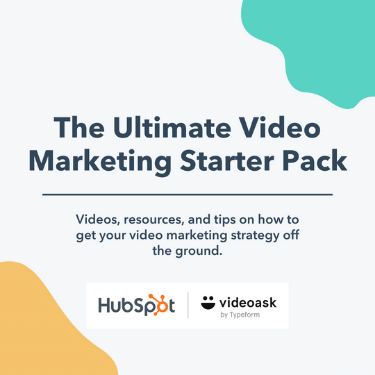
The Ultimate Video Marketing Starter Kit
Access everything you need to get started with video marketing.
- Video Script Templates
- Video Best Practices
- Example Videos
- And More!
Download Free
All fields are required.

2024 State of Video Report
Wistia surveyed over 2,000 professionals, looked at how 100,000+ businesses are using their platform, dug through more than 90 million uploaded videos, and then put everything they found into their 2024 State of Video Report.
Here are some of their biggest takeaways:
- Audiences want to learn how to use your product and gain industry expertise. By far, educational and instructional videos were the most engaging type of video content made by businesses last year. And you don’t need deep pockets to start creating them.
- A bigger budget does not mean higher engagement. High production values and more resources aren't the key to keeping viewers glued to your videos. Audiences willingly watch, and sometimes prefer, low-budget video content, even talking head videos recorded with just a webcam. This makes video production much more accessible for all—a big win for smaller brands!
- Video is an effective way to generate and nurture qualified leads. By adding email capture forms and calls to action (CTAs) to the videos on your website, you can make video an integral part of the lead generation process.
In Wistia’s report, you’ll find a ton of video marketing statistics on performance, creation, distribution, and generative artificial intelligence (AI).
I’ve pulled out the most interesting insights that’ll help you build a stronger video marketing strategy and keep up with the rising need for video content. Let’s dive in!
Video Performance Statistics
For 63% of video marketers, measuring the ROI of their video content involves tracking the number of video views. So, Wistia got curious and asked around: How do you figure out if your video‘s hitting the mark?
Turns out 28% of the folks they surveyed dig into engagement graphs and heatmaps, 27% swear by a video analytics dashboard, and 19% check out where their traffic is coming from.
Tracking performance across different embed locations is key for 14%, while 12% compare different videos against each other.
What's the most valuable performance metric for videos?
Conversion rate steals the spotlight, whether it‘s through clicks on annotations, CTAs, or email capture forms.
Engagement rate grabs the silver medal, with traffic to the video’s page not far behind. Play rate and total plays score fourth and fifth as success markers.
How are businesses putting video performance data to work?
A solid 40% use it to gauge their videos‘ role in hitting marketing goals. Another 23% let it guide their creative choices, 20% rely on it to track the impact of video on a web page, and 17% use it to prove ROI to the company’s stakeholders.
When it comes to A/B testing, what's on the experiment table?
A hefty 31% rely on A/B testing to compare video elements (like music and video length) or structural changes (like the addition or omission of an intro).
About 26% play around with the placement or wording of CTAs or forms to see what works best, 21% pit different videos against each other, and 18% try out custom thumbnails to see which one gets the most plays.
Only a few, 4%, test the waters with player design or color changes.
Video Consumption
The amount of time people spend watching videos keeps going up beyond what Wistia’s seen in the last few years.
In 2023, companies hosting their videos on Wistia saw video plays jump by 15% and total watch time soar by 44%.
Statista also reported that in 2023, over three billion people watched videos on the internet, downloaded or streamed.
Kyle Denhoff, senior director of marketing and audience development at HubSpot, says, “There are two changes in the market indicating a need for more video content. First, the search landscape is being disrupted by AI. Second, we’re seeing a shift to a video-first consumption of content for audiences.”
So what's the scoop on key video performance metrics like the play rate, engagement rate, and conversion rate? Time to break down the stats!
Video Play Rates
Think of the video play rate as the ratio of folks who actually press play to those who just scroll past the video.
Tons of stuff can sway this metric–like how eye-catching your thumbnail is, the length of the video, where it's placed, the content and context surrounding it, and even the flow of traffic to the page displaying the video.

Longer videos usually catch more clicks per page visit. Longer videos are normally packed with more educational info than shorter videos, and they exist on specialized pages with highly specific purposes that likely get fewer impressions. Most people coming to these pages are hunting for info, making them more inclined to press play.
Shorter videos might not get the highest play rates on a web page. Even though short videos are usually found in high-traffic areas like homepages or product pages, they don’t always attract clicks. Reasons vary—visitors might have already watched them, aren‘t quite ready to hit play, or weren’t expecting to find a video while browsing. Despite the lower play rate, their prime spots mean these short videos still get plenty of views.
Lots of things can nudge your video's play rate. In Wistia’s full report, they dive into how factors like industry and company size impact your play rate.

The Ultimate Video Marketing Starter Kit
Access everything you need to get started with video marketing.
- Video Script Templates
- Video Best Practices
- Example Videos
- And More!
Download Free
All fields are required.

Video Engagement
Next up: video engagement rate. This is a key metric that tells us what chunk of your video actually holds your viewer‘s attention.
It’s a great way to see if your audience is actively interested in your video and values the content you’re offering.

Now that we've got a handle on what video engagement rate is all about, it’s time to dive into some benchmarks. How does video length play into keeping viewers hooked? Let’s find out!
Interestingly, engagement rates across various video lengths have remained steady year after year. Though, they've all dipped a bit in the last 5-10 years.
This dip could be because of audiences’ shrinking attention spans, which may also explain why engagement rates hold the top spot for shorter videos, start to drop for those 5-30 minute videos, and take a hit at the hour-long mark.
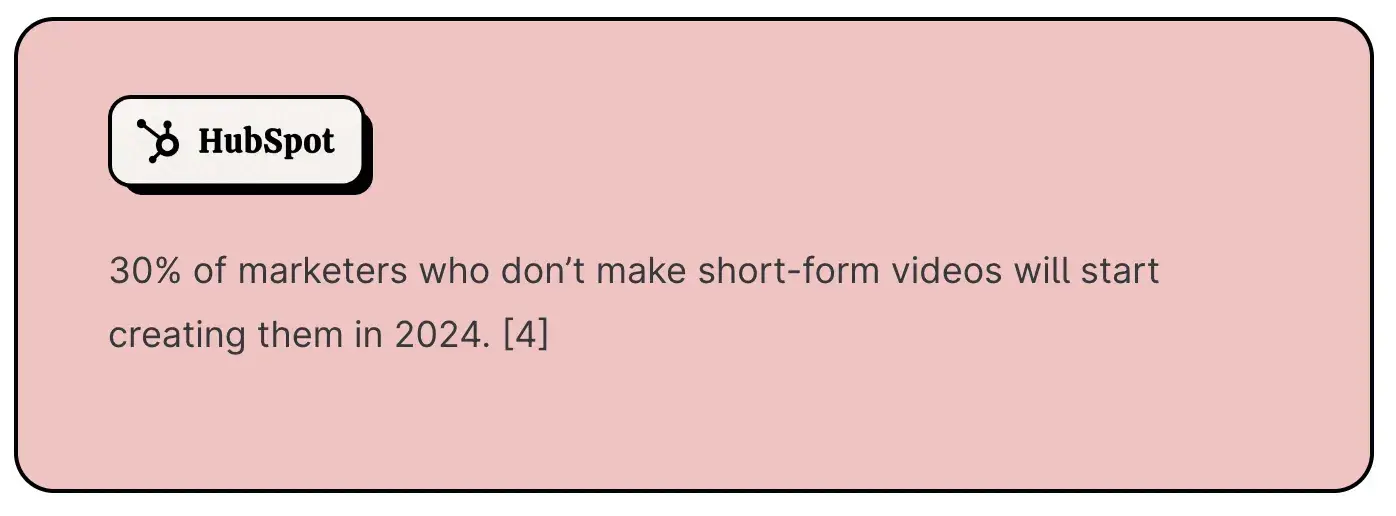
Video Conversion
Wistia found that 41% of businesses add annotation links, CTAs, and email capture forms to their videos to crank up their conversion rates.

Now, let's get into the nitty-gritty: Which conversion opportunities are businesses using in their videos, and which ones work the best?

Annotation links take the top spot at a solid 45%, with CTAs trailing right behind at 40%. Email capture forms? They're only being used 15% of the time.
There has been a bit of a dip in CTAs and forms making their way into videos over the past few years.
It’s a bummer because when you skip out on a conversion action, you’re basically leaving your most engaged viewers hanging without a clear next step.
Here’s something pretty interesting: Email capture forms netted the highest conversion rate at 23%. CTAs are at a respectable 13%, but those popular annotation links? Just 1%.
So, even though annotation links are everywhere, they're not quite bringing home the bacon. And forms—the least popular type—turn out to be the most effective in getting viewers to take that next step.
It‘s clear businesses should use email capture forms and CTAs more. They’re your best bet for nudging viewers closer to becoming customers.
Now that we've found the best ways to get viewers to take action, let’s see how much video length matters in making that happen.
Turns out videos that run over five minutes often see higher conversion rates.
This probably has to do with the fact that longer videos engage viewers more deeply with valuable content, making them more likely to act when a conversion opportunity arises.
Plus, longer videos give you the flexibility to strategically place conversion opportunities at optimal moments.
For videos under five minutes, annotations and forms don’t bring great results.
But CTAs? They still have a solid chance of converting viewers. You can get an in-depth look at this in the full report.
Average Conversion Rate by Position
On average, the best place to put a conversion opportunity is within the first or final quarter of a video or at the very end.

Phew, we just ran through a lot of numbers, didn’t we? But—believe it or not—we’ve only scratched the surface. You'll find a lot more video conversion stats and insights in Wistia’s full report.
Video Creation Statistics
In 2023, there was a dip in the average number of videos produced by businesses. Seems the economic squeeze, which likely led to tighter budgets and smaller creative teams for many companies, put a dent in video production.
What's keeping businesses from making more videos?
Turns out 61% of companies point to time and bandwidth as their biggest hurdles, with team size, resources, and technical ability trailing close behind at 44%.
Only 36% of video marketers sweat over cost and budget, and 32% need to put together ideas or a solid content strategy first.
Remote collaboration is a hiccup for only 15% of companies because many have shifted back to in-person production.
Finally, 11% of in-house video creators need to get stakeholders on board before they can hit the record button.
Pro tip: I’ve found that a great way to tackle these rising marketing budgets is to look at what can be made into videos and which current videos can be repurposed into other smaller assets. Some examples might be webinar cuts, 6-second reels, YouTube shorts, or animations. Additionally, HubSpot's Clip Creator is a free, AI-powered tool that converts text to video — saving businesses time and money.
Andréa Hudson, Head of Audience Development, Distributed Platforms at HubSpot, says, “For businesses truly looking to scale: invest in creators, hire an in-house producer, and leverage AI video tools for your team.”
Are businesses embracing generative AI for video?
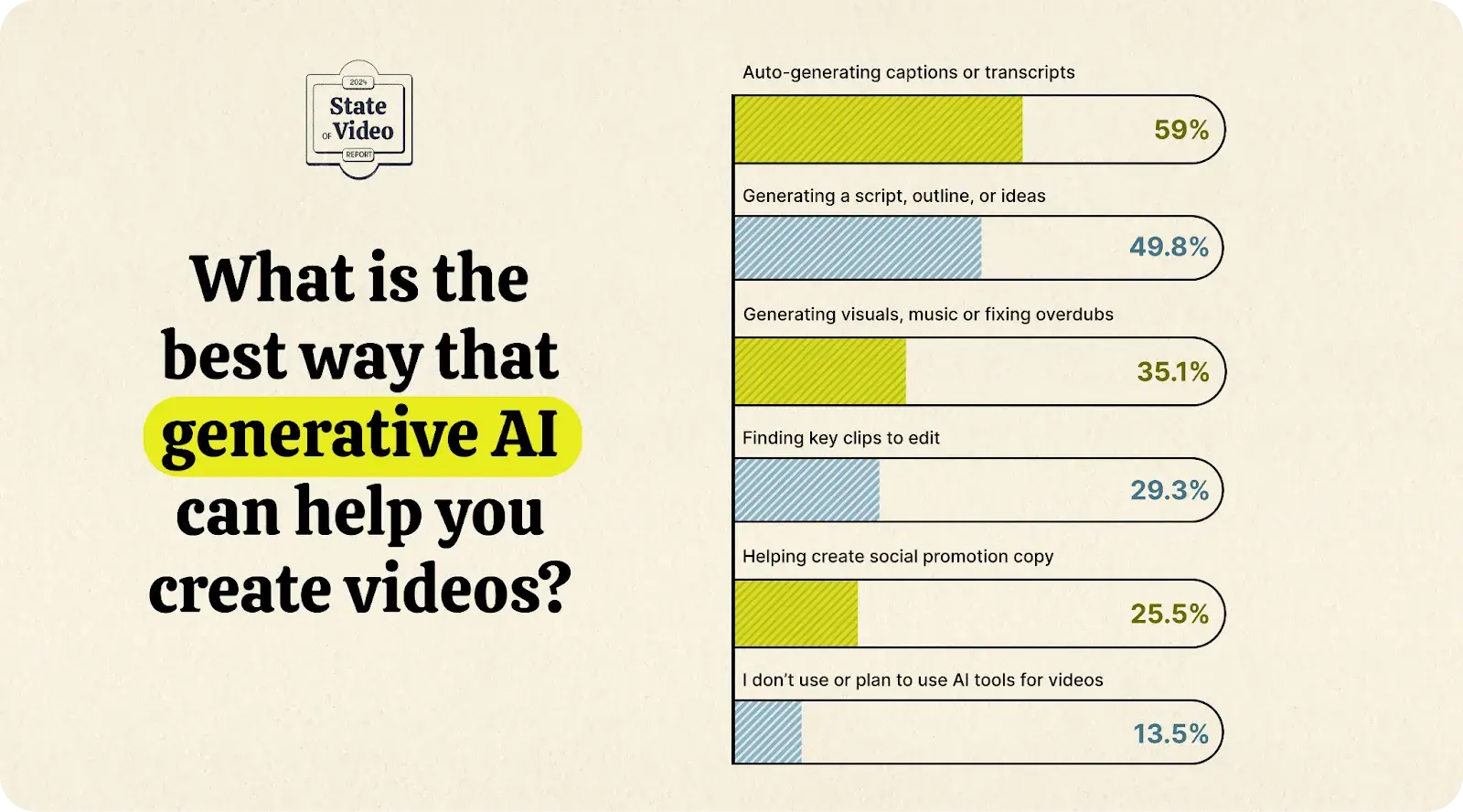
Wistia found that only 18% of businesses are weaving AI tools into their video production workflows.
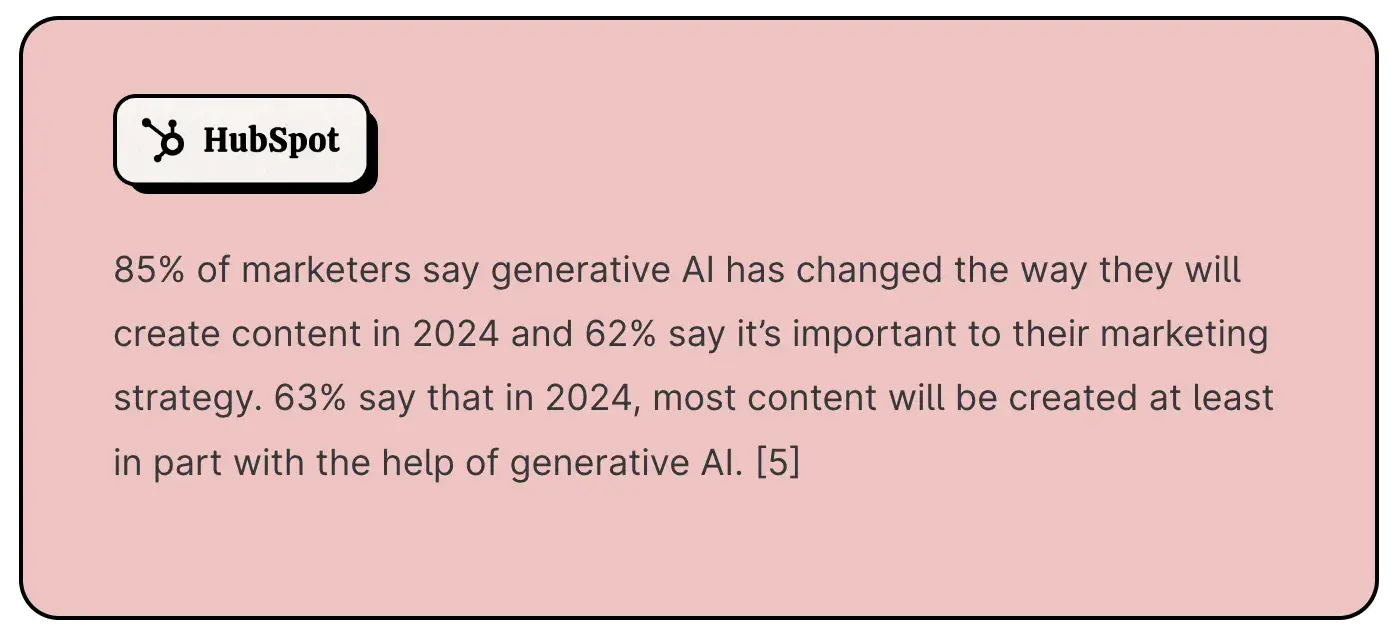
Of these companies, 59% use AI to auto-generate captions or transcripts.
50% tap into it to draft up scripts or outlines or just to brainstorm. 35% lean on AI to generate visuals and music or fix overdubs, while 29% use it to quickly find key clips to edit.
And let's not forget the 26% creating catchy social promo copy with AI’s help.
But get this: A whopping 66% of folks Wistia asked can't wait to dive into AI for their 2024 video projects. They want to use it to save time on scriptwriting, video editing, creating chapters, and summing up videos.
More folks are seeing how AI simplifies the video creation process, so there might be a big jump in AI use by businesses this year.

Free AI Video Generator
Convert text into professional videos for your business with just a few clicks with HubSpot's Clip Creator.
- Generate in moments with AI.
- Customize to your needs.
- Use free video templates.
- Finalize and drive results.
Video Distribution Statistics
Where are businesses embedding their videos?
If you’ve ever wondered where videos get the most eyes, Wistia has answers!
Of businesses, 67% point to their own website as the best place to distribute videos. 49% give their votes to email blasts as a key channel.

LinkedIn tops the list as the favorite social channel for sharing videos, chosen by 43% of businesses. YouTube is close behind, with 40% of companies posting their video content there.
Instagram and Facebook aren't too far behind, coming in at 22% and 19%, respectively.
TikTok might be a bit behind the pack at only 7%, but it's gaining traction fast as a valuable platform for connecting with an untapped B2B audience.

Boosting Video Accessibility
A solid 26% of businesses surveyed believe that improving video accessibility is important for the overall audience experience.

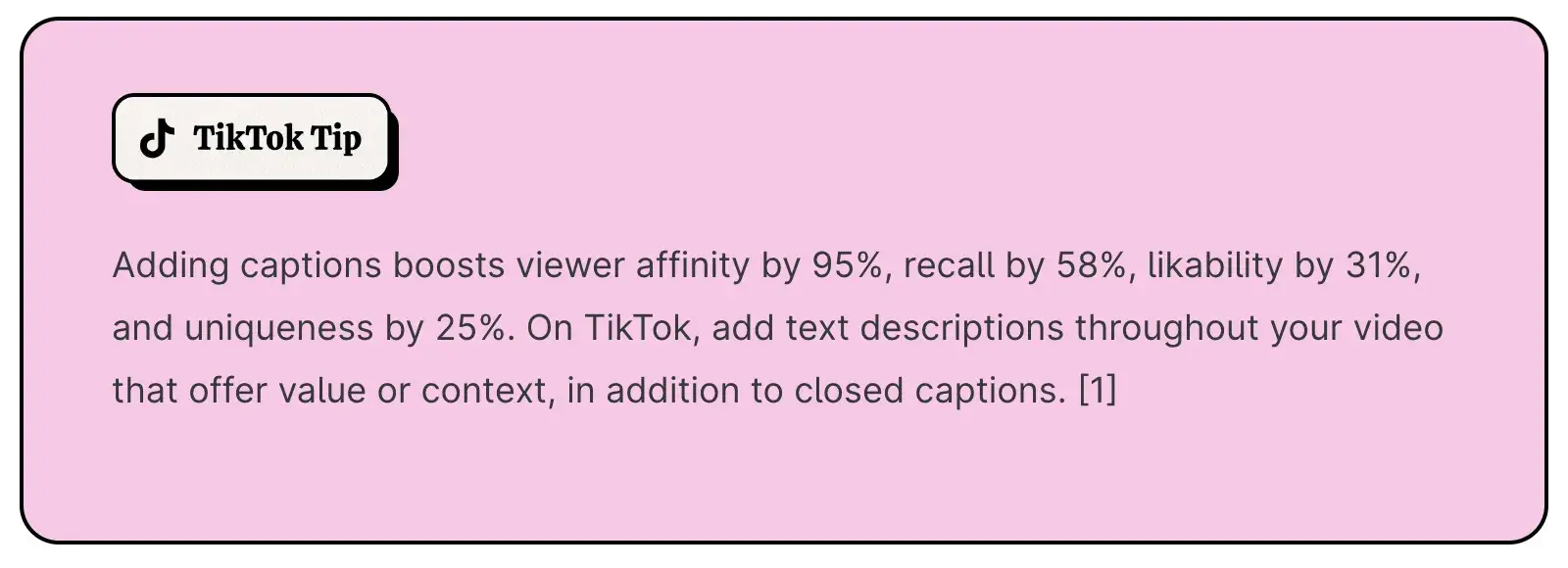
Promoting Videos on Social Media Channels
Businesses, by and large, have multiple distribution channels for their social media videos. According to Hootsuite, businesses post videos on at least two out of the four following channels: TikTok, Instagram, Facebook, and LinkedIn.
They also post videos around three to five times per week (with TikToks, Facebook stories, and Instagram Reels combined).
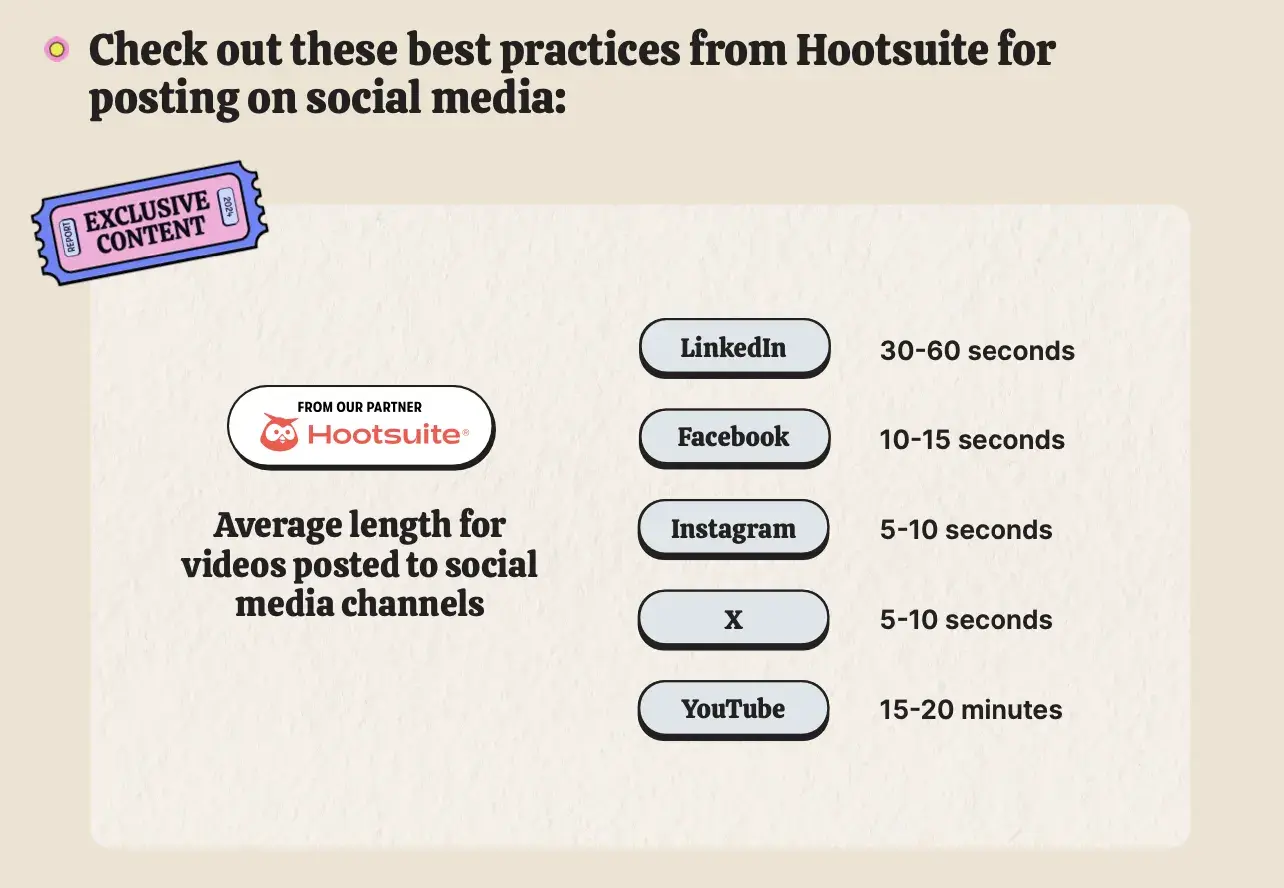
When it comes to posting videos on social media, using a vertical format is the most engaging. Out of all social channels, Instagram, LinkedIn, and Facebook are where most businesses see their videos perform the best.
Pro tip: From personal experience, I suggest that marketers start producing video material appropriate for each specific platform if they want to take advantage of these popular channels.
Want to unlock more insights from Hootsuite, like the best time to post videos for each social channel? Download the full report.
Video Strategy Statistics
What types of videos did companies create last year?
Wistia’s survey showed that in 2023, product videos took the lead as the most common type of video content, accounting for 43% of all videos created.
Educational and instructional videos closely followed at 38%, while live events and social media content each made up 35% of the video landscape.
Additionally, 25% were promotional videos or ads, while customer testimonials made up 18%, sales videos at 14%, original series and podcasts at 11%, and company culture videos at 10%.
It’s clear that businesses are seeing value in producing product videos, educational or instructional content, and webinars.
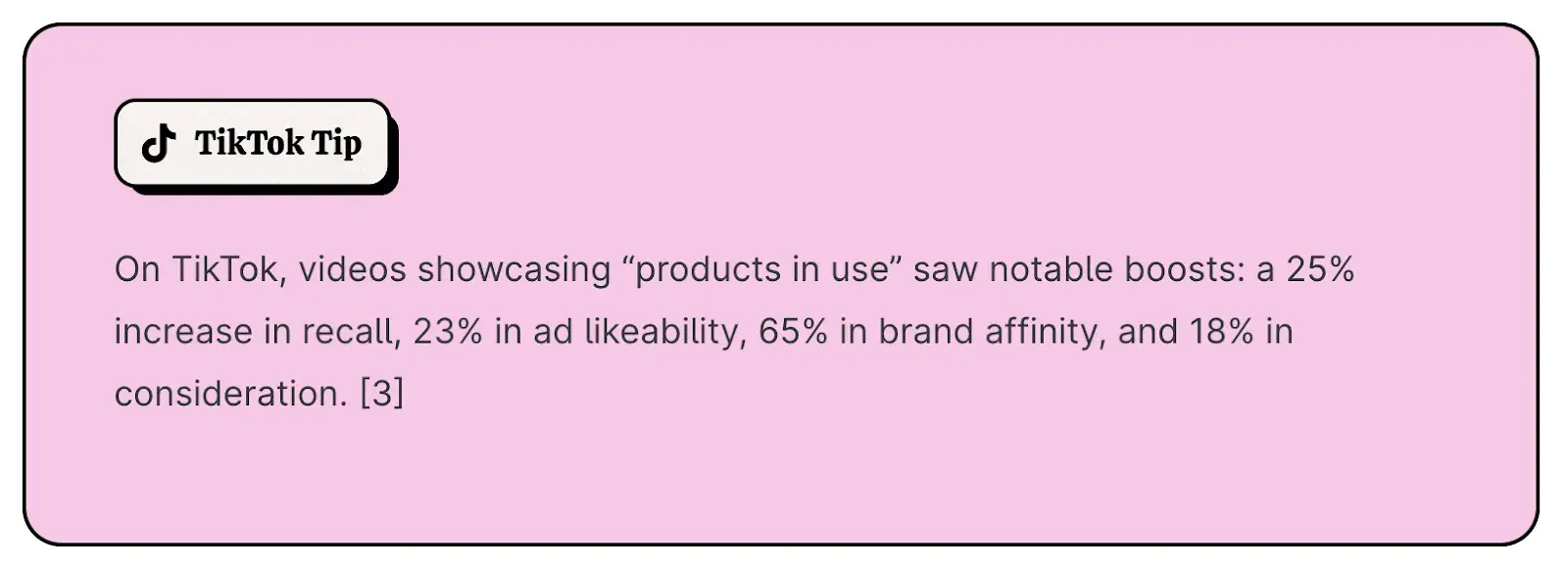
Factors driving the types of videos created in 2023 included product or service launches for 49% of respondents, internal requests for 47%, previous video performance for 31%, customer feedback for 28%, and competitor activity or SEO research for 14%.
What types of videos do businesses want to make more of in 2024?
Product marketing takes center stage in the year ahead.
45% of companies told Wistia that they want to create more product videos to showcase their products and expertise. Additionally, 38% are keen on educational and instructional content, while 35% are all about social media videos.
Webinars and live events are also on the radar for 32% of respondents, followed by customer testimonials at 26% and promotional videos at 27%.
Some companies also have their sights set on making more sales videos (18%), original series (17%), and company culture videos (9%).
The Future of Video
Even though businesses are making fewer videos these days, folks are watching more videos than ever. This leads Wistia to believe that audiences will continue to watch content they find useful, even if its production value is lower.
In my experience, consumers look for the value you provide regarding videos. In fact, Wistia’s survey backs this up, as more people are now keen on product demos, followed by educational and instructional content.
Video remains important for every part of the funnel, and it’s clear that people want to learn about companies this way.
I found that it’s become simpler for companies to shoot a video with a smartphone (Remember the Apple Ad for Olivia Rodrigo’s “Get Him Back!” music video, which was completely shot with an iPhone).
Even Wistia encourages smaller companies to make more videos without relying on expensive equipment.
And Wistia thinks that more companies will get comfortable with incorporating AI tools into their workflows. There are tons of ways AI can help businesses simplify the video creation process and improve their video marketing.
For starters, it can auto-generate captions and transcripts, get a video script off the ground, and create promotional copy for social media.
Unsurprisingly, we’re already anticipating AI to be a prominent aspect of the future of video marketing. I suggest you also look into AI-powered video editing and AI-driven audience targeting techniques.
As AI develops, I believe brands will have the chance to analyze vast amounts of data using AI. This allows them to learn more about their target audience and develop successful video marketing campaigns.
With a solid video marketing strategy, you can compete with bigger companies no matter what industry you’re in.

The Ultimate Video Marketing Starter Kit
Access everything you need to get started with video marketing.
- Video Script Templates
- Video Best Practices
- Example Videos
- And More!
Download Free
All fields are required.

Video Marketing





![The best social media platforms for video content in 2025 [consumer data]](https://53.fs1.hubspotusercontent-na1.net/hubfs/53/img-1-20250516-9399498.webp)


![3 Short-Form Video Trends Marketers Should Watch in 2025 [New Data]](https://53.fs1.hubspotusercontent-na1.net/hubfs/53/ft-short-form-video-trends.webp)
![Are In-Stream Video Ads Worth the Investment? [Benefits & Best Practices for Marketers]](https://53.fs1.hubspotusercontent-na1.net/hubfs/53/in-stream-video-ads-1-20250314-6407067.webp)
![45 Video Marketing Statistics for 2025 [New Data]](https://53.fs1.hubspotusercontent-na1.net/hubfs/53/video-marketing-statistics-1-20250227-6425117.webp)
![Why You Should Leverage Interactive Videos [Data from 500+ Marketers]](https://53.fs1.hubspotusercontent-na1.net/hubfs/53/interactive-video-1-20250216-406926.webp)
![Silent But Mighty: How Soundless Videos Are Winning Social Media [+ 2025 Data]](https://53.fs1.hubspotusercontent-na1.net/hubfs/53/Soundless%20Videos%20We%20Love.png)